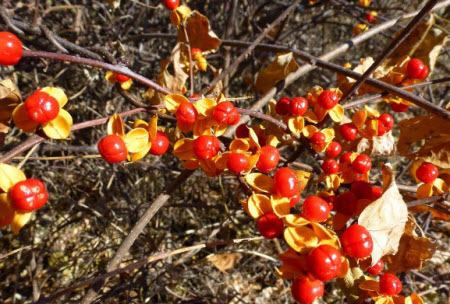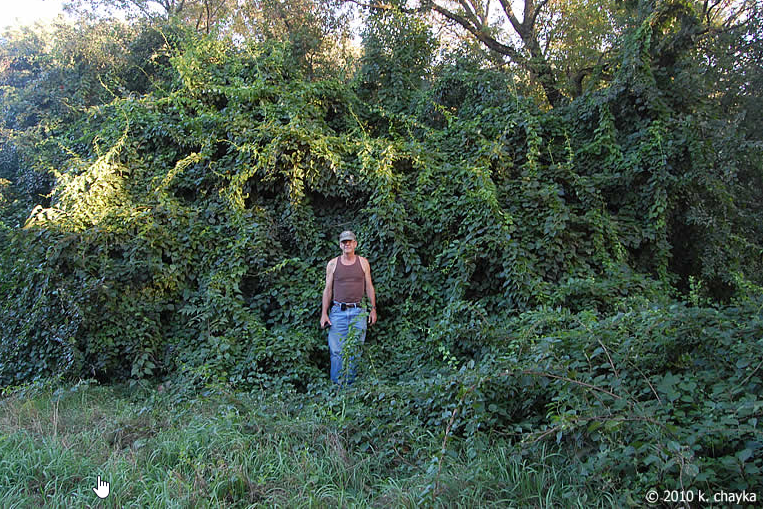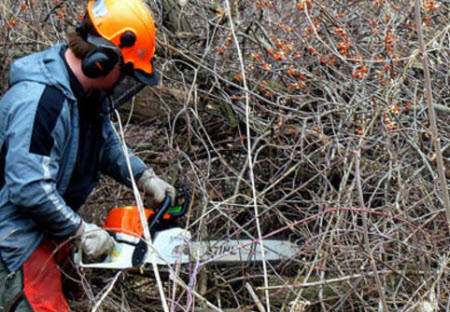Click below to listen to my 2 min. Garden Bite radio show: Oriental bittersweet – Pretty but obnoxious
This lovely looking vine is deceitful as it’s invasive qualities haunt our forests, grasslands, and parks! Sounds a bit harsh for such a well used holiday decoration but it’s true.

It’s all good cheer as we use it for decorating, for YEARS, then the darn thing went wild and is now at the top of the hit list for many U.S. States. The vine is heavily affecting the northeastern U.S. and is affecting Iowa, Wisconsin and Minnesota! Other resources include MyMinnesotaWoods and Minnesota Wildflowers.

The vines twine around trees, girdling them in a snake-like fashion.

Though it prefers forest edges and sunlight, Oriental bittersweet can grow in forest understories, eventually reaching forest canopies, shading the trees and understory and preventing native plant species from flourishing.

Infestations can become so thick that wildlife, such as deer, can have difficulty navigating through wooded areas filled with it.

The persistent berries that make wreaths delightfully charming easily spread the seed of this terrible invasive.
This is not our native American Bittersweet! Yes, it may be prettier but it doesn’t belong here because it doesn’t play well with others, such as our native plants.

The seeds of Oriental bittersweet are easily dispersed, and are commonly spread when birds eat the fruit or people dispose of craft or floral arrangements in compost and brush heaps. Reproduction also occurs through vegetative root suckering.
